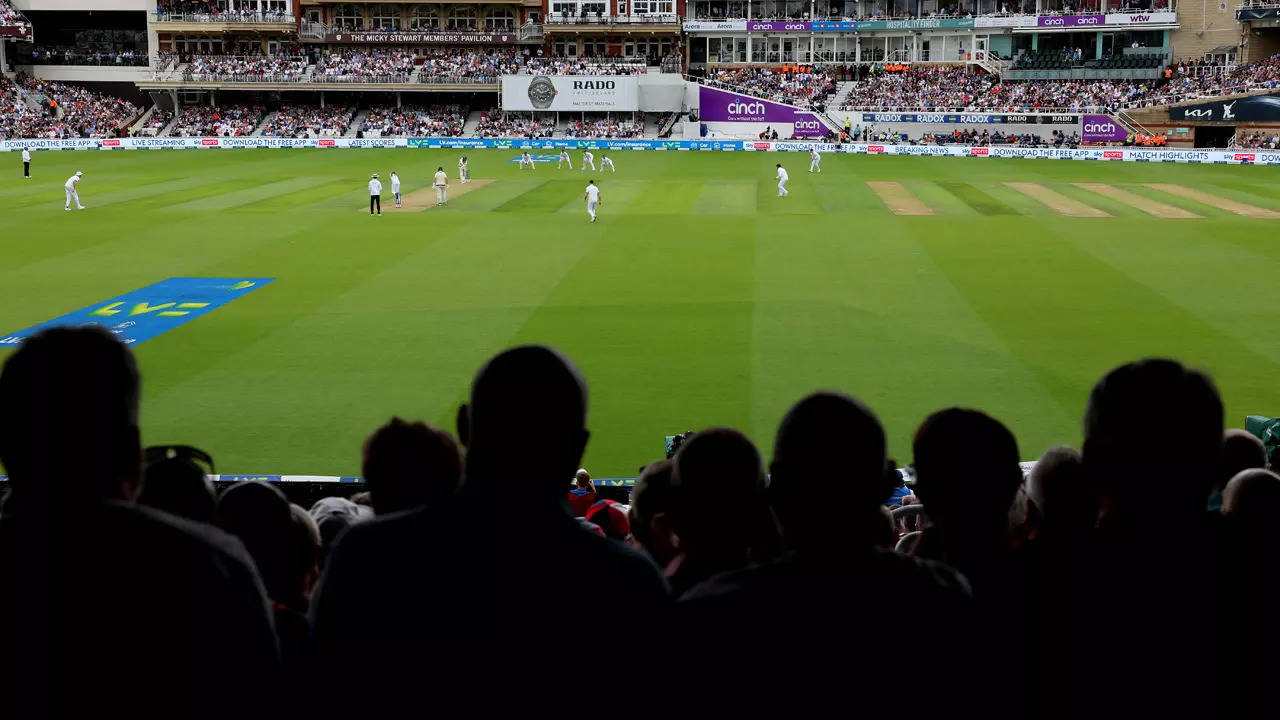[ad_1]
NEW DELHI: The rise of T20 cricket has posed a threat to the survival of Test cricket, and according to Australian cricket legend Ian Chappell, another detrimental factor is the “abysmal pace of play.”
Chappell, in his column for ESPNcricinfo, attributes the sluggish tempo of the game to the batters, highlighting their tendency to waste considerable time in the middle.
“The pace of play in Test cricket is abysmal. It’s slowing every day and nothing is being done to improve matters.
“On the one hand Ben Stokes genuinely strives to improve the entertainment quotient of Test cricket but he’s being undermined by the administrators’ lack of initiative,” he wrote before asking some pertinent questions.
“Why are batters allowed to meet mid-pitch during overs to discuss who knows what without penalty? Why aren’t batters informed that etiquette requires them to be in their stance at the crease when a bowler is ready to deliver?
“Heat extremes excepted, why allow drinks at times outside of the regular break? Why do glove changes occur so often? Surely this is superstition more than need. Why aren’t boundaries signalled only for balls that hit the rope rather than allowing pointless replays that look at the whereabouts of a fielder’s feet or hands?” he asked.
The DRS also has also contributed to the slow pace of the game, feels Chappell.
“Have administrators heard how players shouldn’t argue with an umpire? Then why do those same administrators encourage arguing with an umpire by allowing players to review decisions? The number of tactical reviews is growing out of hand and replays are taking too much time.
“How come players are allowed to charge at umpires while they are appealing, without any recrimination? I was appalled to see Australian players indulging in this heinous behaviour in the SCG Test recently. This bad habit should be subject to penalty.”
He also questioned batters getting away with changing stance till the very last moment.
“How can it be fair that a bowler has to nominate his method of delivery through the umpire (right- or left arm, over or round the wicket) but a batter can face up left-handed but then change to play a right-handed shot?
“There’s one main reason for this – to undermine the field placings. There is no doubt it’s skilful but it’s not fair. Fairness should be a consideration when framing cricket’s laws. A batter shouldn’t be allowed to change the order of his hands or feet,” he wrote.
Chappell, in his column for ESPNcricinfo, attributes the sluggish tempo of the game to the batters, highlighting their tendency to waste considerable time in the middle.
“The pace of play in Test cricket is abysmal. It’s slowing every day and nothing is being done to improve matters.
“On the one hand Ben Stokes genuinely strives to improve the entertainment quotient of Test cricket but he’s being undermined by the administrators’ lack of initiative,” he wrote before asking some pertinent questions.
“Why are batters allowed to meet mid-pitch during overs to discuss who knows what without penalty? Why aren’t batters informed that etiquette requires them to be in their stance at the crease when a bowler is ready to deliver?
“Heat extremes excepted, why allow drinks at times outside of the regular break? Why do glove changes occur so often? Surely this is superstition more than need. Why aren’t boundaries signalled only for balls that hit the rope rather than allowing pointless replays that look at the whereabouts of a fielder’s feet or hands?” he asked.
The DRS also has also contributed to the slow pace of the game, feels Chappell.
“Have administrators heard how players shouldn’t argue with an umpire? Then why do those same administrators encourage arguing with an umpire by allowing players to review decisions? The number of tactical reviews is growing out of hand and replays are taking too much time.
“How come players are allowed to charge at umpires while they are appealing, without any recrimination? I was appalled to see Australian players indulging in this heinous behaviour in the SCG Test recently. This bad habit should be subject to penalty.”
He also questioned batters getting away with changing stance till the very last moment.
“How can it be fair that a bowler has to nominate his method of delivery through the umpire (right- or left arm, over or round the wicket) but a batter can face up left-handed but then change to play a right-handed shot?
“There’s one main reason for this – to undermine the field placings. There is no doubt it’s skilful but it’s not fair. Fairness should be a consideration when framing cricket’s laws. A batter shouldn’t be allowed to change the order of his hands or feet,” he wrote.
[ad_2]
Source link

